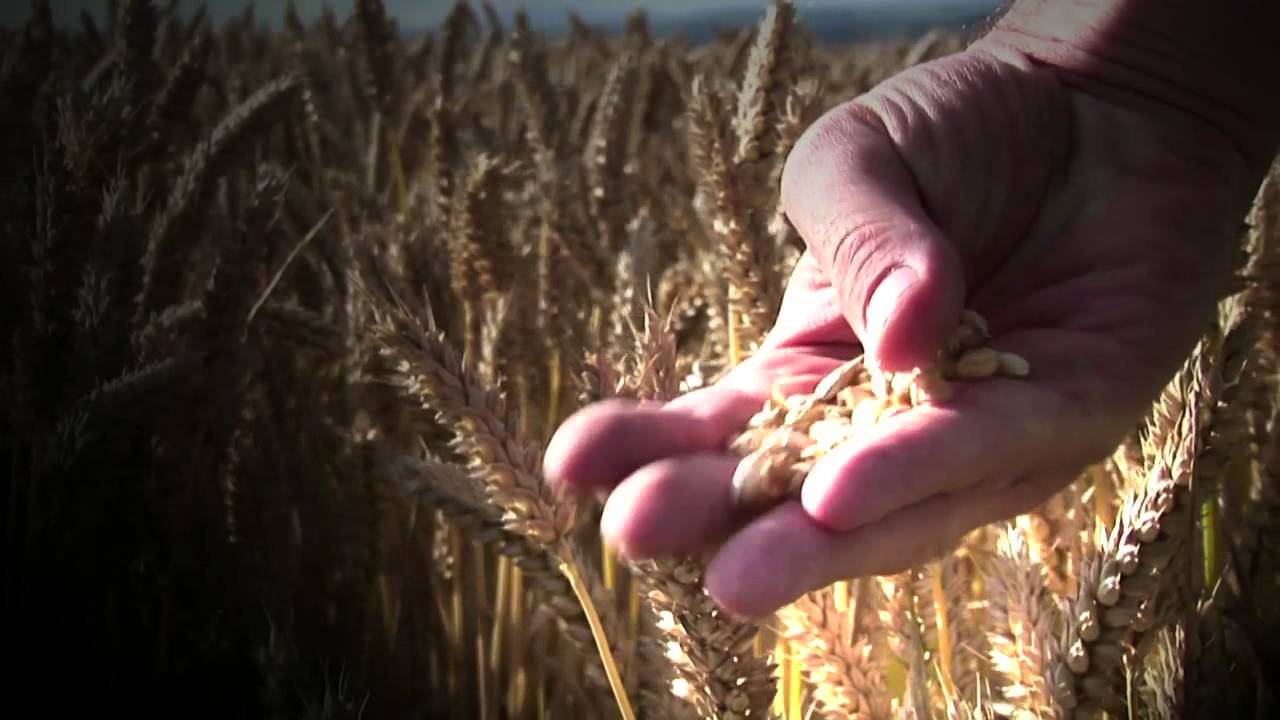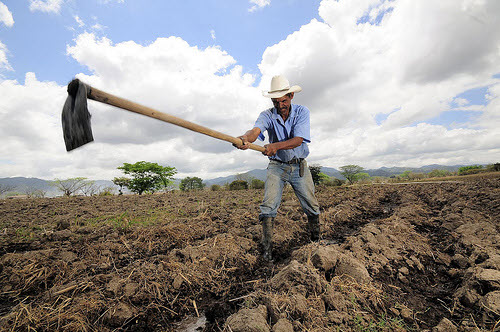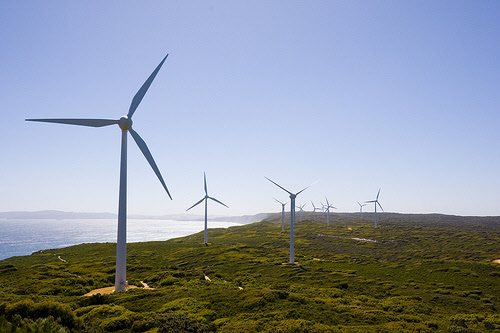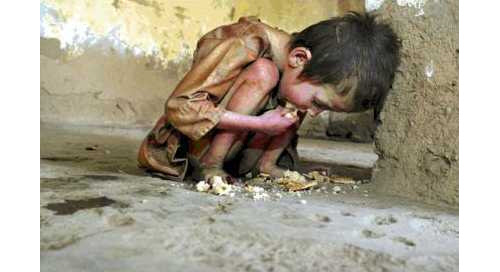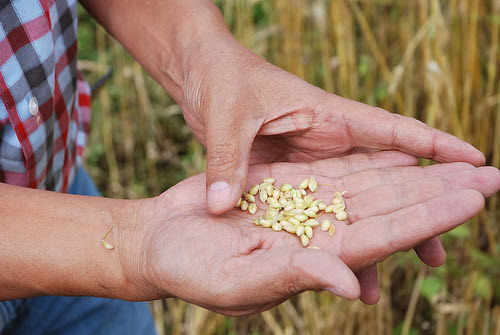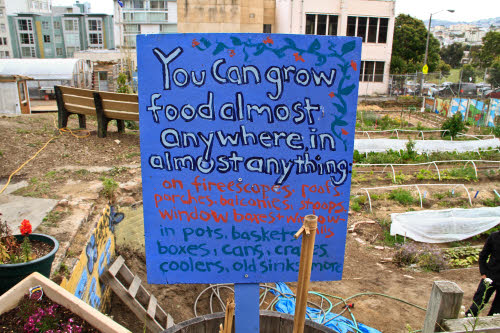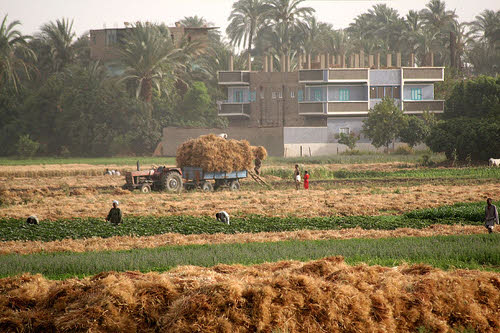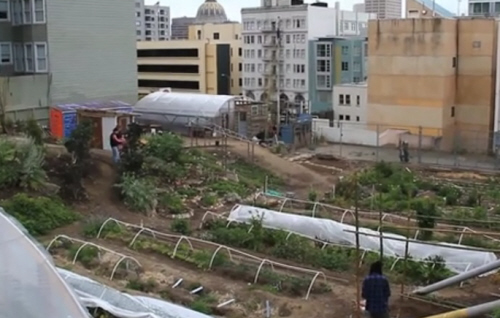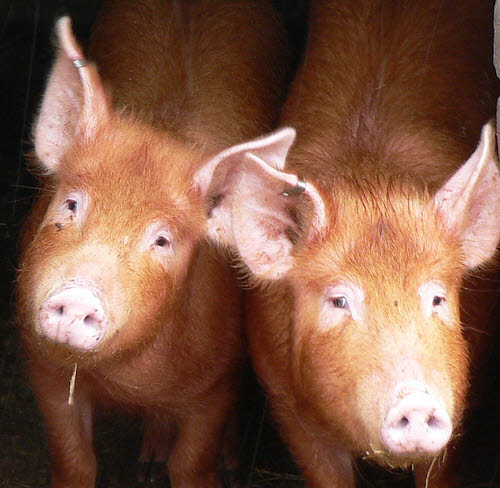With falling water tables, eroding soils, and rising temperatures making it difficult to feed growing populations, control of arable land and water resources is moving to center stage in the global struggle for food security. What will the geopolitics of food look like in a new era dominated by scarcity and food nationalism? Here are a few of the many facts from Full Planet, Empty Plates.
Tag: agriculture
The New Global Food Crisis: Lester Brown’s Full Planet, Empty Plates
The phrase “global food crisis” may strike us in the developed world as a bit overblown. But in his new book Full Planet, Empty Plates: The New Geopolitics of Food Scarcity, Lester R. Brown, founder of the Earth Policy Institute, aptly demonstrates that our current food security situation is anything but normal… and could even represent the “weak link” to maintaining the standard of living to which we’ve become accustomed.
The Great Transition, Part II: Building a Wind-Centered Economy
Over the past decade, world wind electric generating capacity grew at nearly 30 percent per year, its increase driven by its many attractive features and by public policies supporting its expansion. Wind is abundant, carbon-free and nondepletable. It uses no water, no fuel, and little land. Wind is also locally available, scales up easily, and can be brought online quickly. No other energy source can match this combination of features.
Family Planning Can Help Keep Our Lakes Blue
A human population of 11 billion might turn Wisconsin’s gorgeous lakes green. Not green as in environmentally sound, but green as in covered in slimy, stinky, toxic blue-green algae.
By the Numbers – Data Highlights from Full Planet, Empty Plates
More than 150 data sets accompany Lester R. Brown’s latest book, Full Planet, Empty Plates: The New Geopolitics of Food Scarcity. These tables and graphs help to explain the precarious situation in which humanity finds itself, as the world leaves an era of food surpluses and enters one of food scarcity. Here are some highlights from the collection.
World Forest Area Still on the Decline
Forests provide many important goods, such as timber and paper. They also supply essential services—for example, they filter water, control water runoff, protect soil, regulate climate, cycle and store nutrients, and provide habitat for countless animal species and space for recreation. Human demand for their products, though, keeps them in a state of decline globally.
Limited Encouragement In The Latest Update Of The FAO Food Price Index
Yesterday, the Food and Agriculture Organization (FAO) of the United Nations released it’s monthly update on global food trade pricing. The overall “Food Price Index” that combines all categories did decline slightly, but less than the previous month. The index is still substantially higher than it was at a comparable period during the last cycle.
Denver's Waste Farmers Featured as "Impact Company"
Denver-based Waste Farmers, a venture by Inspired Economist founder John-Paul Maxfield, has been recognized as an “Impact company” by The [i4c] Campaign, and featured in a new video series by the organization.
What is an Urban Farm?
How do you define an “urban farm?” Film maker Dan Susman, co-creator of the forthcoming Growing Cities, tries to do so after witnessing dozens of efforts to produce food in urban settings.
Arab Grain Imports Rising Rapidly
The Arab countries in the Middle East and North Africa make up only 5 percent of the world’s population, yet they take in more than 20 percent of the world’s grain exports. Imports to the region have jumped from 30 million tons of grain in 1990 to nearly 70 million tons in 2011. Now imported grain accounts for nearly 60 percent of regional grain consumption. With water scarce, arable land limited, and production stagnating, grain imports are likely to continue rising.
The Urban Farm Comes to Film: Growing Cities
Dan Susman and Andrew Monbouquette saw that, despite the growth of urban agriculture around the United States, there wasn’t much going on in their home town of Omaha, Nebraska on this front… so they decided to strike out on a road trip to see what was happening in other cities. Growing Cities, a feature-length documentary, is the result of that road trip.
Meat Consumption in China Now Double That in the United States
More than a quarter of all the meat produced worldwide is now eaten in China, and the country’s 1.35 billion people are hungry for more. In 1978, China’s meat consumption of 8 million tons was one third the U.S. consumption of 24 million tons. But by 1992, China had overtaken the United States as the world’s leading meat consumer—-and it has not looked back since.
Global Water Resources: Where We Get It & What We Do With It (Infographic)
Where do we get our water? What do we use it for? The answers may surprise you, and clarify why we need to focus even more on conserving our precious water resources.

